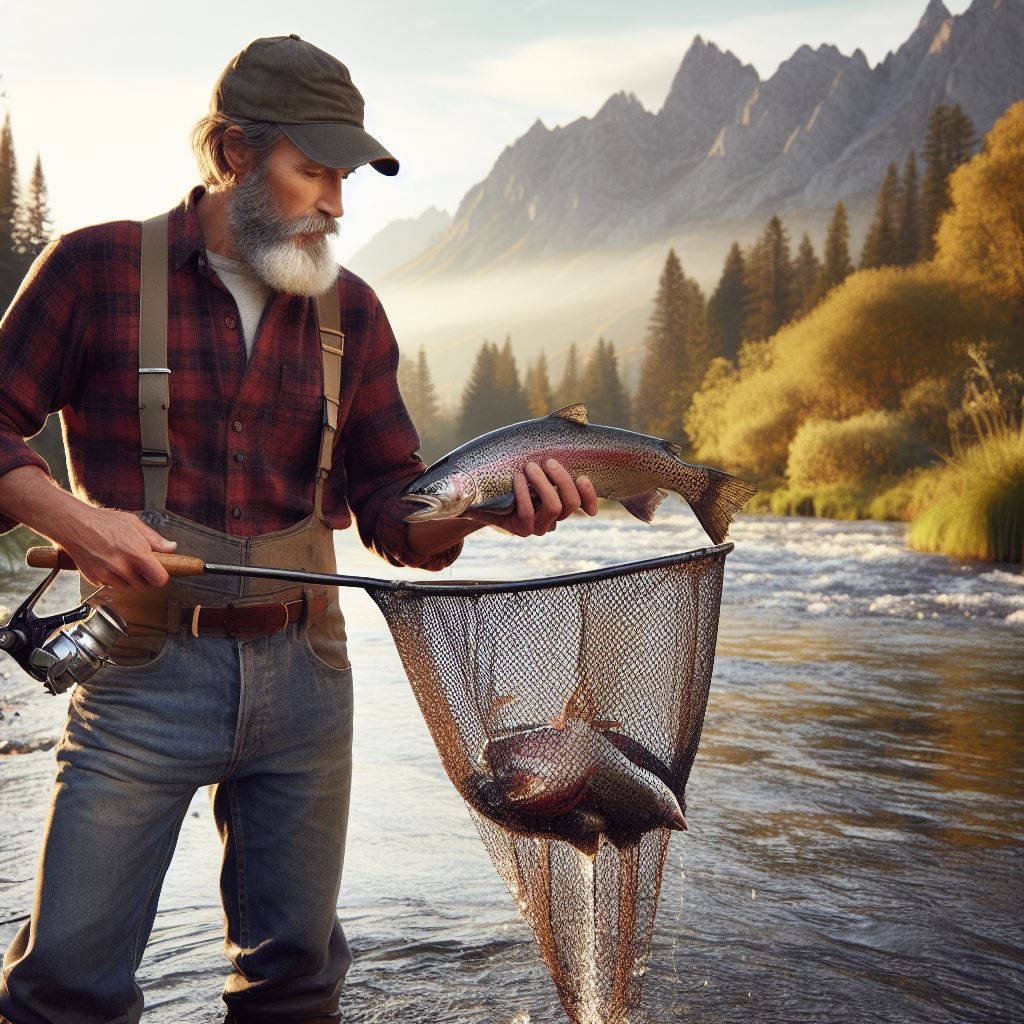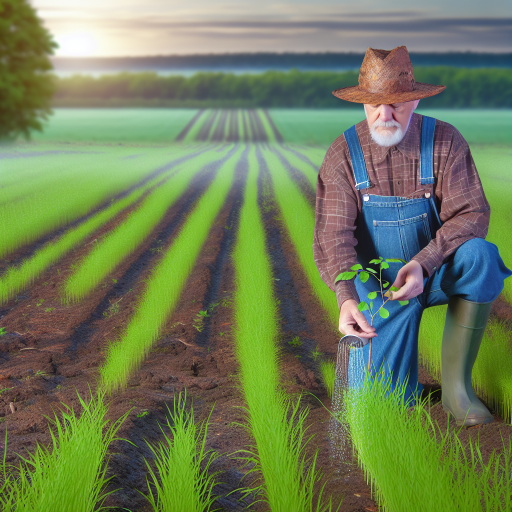Introduction
Let’s explore the Fishing Trends and Predictions in this blog Section.
Fishing has long been a beloved pastime in America, but what does the future hold?
In this blog post, we will discuss the trends and predictions for the future of fishing in America.
Whether you’re an avid angler or simply curious about the future of this activity, this post aims to provide insights and forecasts.
The allure of the open waters, the thrill of the catch, the tranquility of casting a line – fishing has long been an integral part of American culture.
However, the future of this beloved pastime is uncertain, as a confluence of factors threatens the sustainability of our marine resources.
From climate change and overfishing to technological advancements and changing consumer preferences, the fishing industry is at a crossroads.
In this blog, we delve into the trends shaping the future of fishing in America, exploring the challenges and opportunities that lie ahead.
Join us as we navigate the shifting tides of this enduring tradition, seeking to ensure its continued vibrancy for generations to come.
Let’s dive in and explore what lies ahead for fishing in America.
Current State of Fishing in America
1. Overview of the current fishing industry in America
The fishing industry in America plays a crucial role in the nation’s economy and food supply.
It encompasses a wide range of activities, including commercial and recreational fishing.
2. Popularity and economic impact of recreational fishing
Recreational fishing is immensely popular in America, attracting millions of people who enjoy it as a hobby or sport.
It not only provides individuals with entertainment but also contributes significantly to the economy through tourism and related industries.
3. Key challenges faced by the fishing industry
Despite its importance, the fishing industry in America faces various challenges.
Overfishing, habitat destruction, and climate change threaten the sustainability of fish stocks and marine ecosystems.
Additionally, strict regulations and competition from foreign imports pose economic difficulties for commercial fishermen.
4. Overfishing and its consequences
One of the most pressing issues in the fishing industry is overfishing, which occurs when fish populations are depleted at an unsustainable rate.
Overfishing disrupts marine ecosystems, leading to imbalances in the food chain and the extinction of certain species.
5. Habitat destruction and its impact on fisheries
Another significant challenge faced by the fishing industry is habitat destruction.
Transform Your Career Today
Unlock a personalized career strategy that drives real results. Get tailored advice and a roadmap designed just for you.
Start NowActivities such as bottom trawling and pollution damage crucial habitats like coral reefs and seafloor ecosystems, reducing fish populations and their ability to reproduce.
6. Climate change and its effect on fish populations
The fishing industry is also greatly affected by climate change.
Rising sea temperatures, ocean acidification, and extreme weather events disrupt the natural habitats of fish, making it harder for them to survive and reproduce.
7. Economic difficulties for commercial fishermen
Commercial fishermen face economic challenges due to strict regulations aimed at conserving fish stocks and protecting endangered species.
These regulations can restrict fishing quotas and seasons, reducing the profitability of commercial fishing operations.
8. Competition from foreign imports
The fishing industry in America also faces competition from foreign imports, which often offer cheaper seafood products due to lower labor and production costs.
This competition can impact the livelihoods of domestic fishermen and the overall economic viability of the industry.
9. The importance of sustainable fishing practices
To overcome these challenges, the fishing industry must embrace sustainable fishing practices.
This includes implementing effective fisheries management plans, promoting responsible fishing techniques, and reducing bycatch.
10. Collaboration between stakeholders
Addressing the current state of the fishing industry requires collaboration between fishermen, government agencies, research institutions, and environmental organizations.
By working together, stakeholders can develop innovative solutions to protect fish stocks and ensure the future sustainability of fishing in America.
All in all, the current state of the fishing industry in America is marked by significant challenges, including overfishing, habitat destruction, climate change, strict regulations, and competition from foreign imports.
However, by adopting sustainable practices and fostering collaboration, the industry can overcome these obstacles and secure a thriving future for fishing in America.
Read: Impact of Climate Change on US Fishing Grounds
Technological Advancements in Fishing
- Technology is revolutionizing the fishing industry and shaping its future.
- Smart fishing rods are one of the innovations transforming the way anglers fish.
- These rods are equipped with sensors and software that analyze fishing conditions and provide feedback.
- Fish finders are another technological advancement that enhances fishing experiences.
- Using sonar technology, fish finders can detect fish and underwater structures.
- By locating fish, anglers can increase their chances of a successful catch.
- Underwater drones are also being utilized in fishing to explore beneath the water’s surface.
- These drones can capture real-time footage, allowing anglers to identify fish and plan their strategies.
- Technology’s impact on fishing efficiency is undeniable.
- With the help of advanced tools and equipment, anglers can locate fish more quickly and accurately.
- This leads to increased productivity and reduces the time spent searching for fish.
- Furthermore, technological advancements have improved the overall fishing experience.
- Anglers can now gather more information about fishing conditions and make informed decisions.
- Through data analysis, they can determine the best time and location to catch fish.
- Moreover, technology allows anglers to share their knowledge and experiences with others.
- Online platforms and mobile applications provide a space for anglers to connect, exchange tips, and share their catch.
- These advancements also contribute to conservation efforts in the fishing industry.
- With the use of GPS technology and digital maps, anglers can avoid overfished areas.
- They can also track their catches and contribute to scientific data used for fisheries management.
- Despite the numerous benefits, there are concerns regarding the reliance on technology in fishing.
- Some argue that technology takes away from the traditional aspects and skills required in fishing.
- Others worry about the potential environmental impact of advanced fishing equipment.
- It is crucial to find a balance between technological advancements and sustainable fishing practices.
- Overall, technology is playing a significant role in shaping the future of fishing.
- Innovations like smart fishing rods, fish finders, and underwater drones improve efficiency and enhance experiences.
- With responsible use of technology, anglers can continue to enjoy their favorite pastime while promoting sustainability.
Sustainability and Conservation Efforts
In recent years, there has been a growing recognition of the importance of sustainable fishing practices.
These practices aim to ensure that fish populations are not depleted and that marine ecosystems remain healthy and productive.
Importance of Sustainable Fishing Practices
- Sustainable fishing practices are crucial for maintaining the balance of marine ecosystems.
- By targeting specific species and leaving others to reproduce, we can prevent overfishing.
- Overfishing disrupts the food chain and can lead to the decline of other marine species.
- It also affects the livelihoods of people who depend on fishing for their income.
- Adopting sustainable practices ensures the long-term viability of fisheries and coastal communities.
Ongoing Efforts to Protect Marine Ecosystems and Fish Populations
- There are numerous ongoing efforts to protect marine ecosystems and conserve fish populations.
- One such effort is the establishment of marine protected areas (MPAs).
- MPAs are designated zones where fishing activities are restricted or prohibited.
- These areas serve as sanctuaries for fish species to reproduce and replenish their population numbers.
- Additionally, scientists and conservationists are actively researching and monitoring fish populations.
- They use this data to inform management decisions to ensure sustainable fishing practices.
- Efforts are also being made to address habitat destruction, pollution, and climate change.
- These factors can negatively impact marine ecosystems and the health of fish populations.
- By targeting these issues, we can enhance conservation efforts and promote sustainability.
The Role of Organizations and Government Regulations
- Various organizations play a crucial role in promoting sustainability in the fishing industry.
- Non-profit organizations, such as Oceana and the Marine Stewardship Council, work towards sustainable fishing practices.
- They collaborate with fishermen, scientists, and policymakers to develop and implement strategies.
- Government regulations also play a significant role in promoting sustainable fishing practices.
- They set catch limits, establish fishing seasons, and implement gear restrictions to prevent overfishing.
- These regulations are enforced through monitoring and compliance programs.
- Additionally, governments provide funding and support for research and conservation initiatives.
- By creating partnerships between organizations and governments, we can further advance sustainability efforts.
In fact, sustainable fishing practices and conservation efforts are vital for the future of fishing in America.
By maintaining the balance of marine ecosystems, protecting fish populations, and implementing regulations, we can ensure the long-term viability of fisheries and the well-being of coastal communities.
Read: Safety Protocols and Training for American Fishermen
Changing Demographics and Recreational Fishing
1. Analyze the demographic shifts in the fishing community
- The fishing community is experiencing significant demographic changes.
- Older generations who were once avid anglers are gradually decreasing in numbers.
- This shift is primarily due to aging and decreased participation rates.
- Younger generations are making up a larger percentage of the fishing community.
- Millennials and Gen Z individuals are actively engaging in recreational fishing.
- With technological advancements, fishing is becoming more accessible to a wider range of people.
2. The increasing participation of younger generations in recreational fishing
- Millennials and Gen Z are finding solace in the tranquility of recreational fishing.
- They see it as a way to escape the digital world and reconnect with nature.
- Social media platforms have played a significant role in popularizing fishing among young people.
- Through online communities and influencers, they are exposed to the allure of the sport.
- Fishing provides an opportunity for younger generations to bond with family and friends.
3. Address the rise of women anglers and diversification within the fishing community
- Traditionally a male-dominated activity, fishing is now attracting more women.
- Women anglers are breaking barriers and challenging stereotypes in the fishing community.
- They are actively seeking opportunities to showcase their skills and expertise.
- Fishing tournaments and organizations are becoming more inclusive and welcoming to women.
- The fishing industry is recognizing and catering to the needs and preferences of female anglers.
- Efforts are being made to provide women with adequate resources and support to excel in fishing.
4. Explore the diversification within the fishing community
- The fishing community is becoming more diverse in terms of ethnicity and backgrounds.
- Anglers from various cultural backgrounds are discovering the joys of recreational fishing.
- This diversification brings a fresh perspective and fosters cross-cultural interactions.
- Different fishing traditions and techniques are being shared and embraced within the community.
- The fishing industry is adapting to the changing demographics by offering tailored products and services.
- This inclusivity contributes to the growth and sustainability of the fishing industry.
In short, the fishing community is undergoing significant demographic shifts.
Transform Your Career Today
Unlock a personalized career strategy that drives real results. Get tailored advice and a roadmap designed just for you.
Start NowWith the participation of younger generations, the sport is experiencing a revival and attracting new enthusiasts.
The rise of women anglers is breaking traditional gender norms and promoting inclusivity within the fishing community.
Moreover, the industry is diversifying and embracing individuals from various cultural backgrounds.
Fishing is no longer limited to a specific demographic, as it evolves to cater to the changing demographics and interests of the American population.

Climate Change and its Impact on Fishing
Climate change is having a significant impact on fishing in America, with changes in temperature, ocean currents, and weather patterns affecting fish habitats and species distribution.
Effects of Climate Change on Fish Habitats and Species Distribution
As the Earth’s climate continues to warm, marine ecosystems are experiencing shifts in temperature and ocean currents, leading to changes in fish habitats.
This shift disrupts the balance of ecosystems and alters the distribution of various fish species.
Warmer waters are causing fish species to move further north or to deeper waters, while some are disappearing from certain areas completely.
Likewise, some species are becoming more abundant in regions where they were previously uncommon.
These changes are a direct result of the impact of climate change on the availability of suitable habitats for fish.
Potential Challenges and Adaptations Required by Fishermen
Climate change poses various challenges for fishermen across America.
As fish populations shift and their distribution changes, fishermen need to adapt their fishing strategies and techniques to target new species or different populations of known species.
Additionally, changes in weather patterns, such as increased storm intensity and frequency, can make fishing more dangerous and unpredictable.
Fishermen may need to invest in more robust and secure fishing equipment to withstand harsher weather conditions.
Furthermore, climate change can also lead to fluctuations in fish stocks, affecting both commercial and recreational fishing industries.
Fishermen must stay informed about changing regulations and quotas to ensure the sustainability of fish populations and prevent overfishing.
Importance of Monitoring and Mitigating Climate Change Impacts
It is crucial for fishermen, policymakers, and scientists to closely monitor the impacts of climate change on fishing and take steps to mitigate its effects.
This involves implementing strategies to conserve fish populations, protect their habitats, and promote sustainable fishing practices.
By monitoring fish populations and their movements, scientists can gather crucial data to understand how climate change is affecting different species.
This information can then be used to develop effective management plans and conservation efforts.
Transform Your Career Today
Unlock a personalized career strategy that drives real results. Get tailored advice and a roadmap designed just for you.
Start NowAdditionally, policymakers can play a significant role in addressing climate change by implementing regulations and initiatives that promote sustainable fishing practices.
This may include implementing stricter catch limits, enforcing marine protected areas, and incentivizing the use of eco-friendly fishing gear.
Collaborative efforts between fishermen, policymakers, and scientists are essential to ensure the long-term sustainability of fish populations and the fishing industry as a whole.
Together, they can work towards reducing greenhouse gas emissions, protecting fish habitats, and adapting fishing practices to the changing conditions brought about by climate change.
In summary, climate change is significantly impacting fishing in America through its effects on fish habitats and species distribution.
Fishermen need to adapt to these changes, while also emphasizing the importance of monitoring and mitigating climate change impacts.
Collaborative efforts are necessary to ensure the sustainability of fish populations and the long-term viability of the fishing industry.
Read: The Cultural Significance of Fishing in American Society
Future Trends in Fishing Tourism
Fishing tourism has experienced significant growth in America over the past few years.
This sector offers enthusiasts a unique opportunity to combine their passion for fishing with the joy of exploring new destinations.
As the industry continues to evolve, several emerging trends such as destination fishing and eco-tourism have gained traction.
However, along with these promising developments come potential challenges that need to be addressed.
1. Growth of the fishing tourism industry in America
- Fishing tourism has witnessed a steady rise in popularity due to its appeal to both avid anglers and nature enthusiasts.
- The abundance of fishing spots across America, from serene lakes to picturesque rivers, makes it an ideal destination for fishing enthusiasts.
- The industry has experienced a surge in demand, with anglers from all over the country and even international travelers seeking guided fishing trips.
2. Emerging trends in fishing tourism
Destination fishing
- Destination fishing has become increasingly popular, with anglers travelling long distances to reach specific fishing spots renowned for their abundant fish populations.
- The allure of landing a trophy fish in renowned locations like Alaska’s Bristol Bay or Florida’s Everglades draws anglers seeking unforgettable experiences.
Eco-tourism
- Eco-tourism has emerged as a growing trend in fishing tourism, driven by a desire for sustainable and responsible fishing practices.
- Fishing tour operators often emphasize the importance of conservation and ethical angling, promoting catch-and-release practices to preserve fish populations.
3. Future potential in the fishing tourism sector
- The future looks promising for fishing tourism in America, as more people embrace outdoor activities and seek unique experiences.
- With advancements in technology, fishing tour operators can provide immersive experiences through virtual reality or underwater drone footage.
- The potential for growth lies not only in attracting fishing enthusiasts but also in appealing to families and individuals looking for a relaxing getaway.
4. Challenges in the fishing tourism sector
Environmental impact
- As the popularity of fishing tourism increases, there is a concern about the potential environmental impact on fish populations, habitats, and ecosystems.
- Balancing economic benefits with sustainable practices is vital to ensure the long-term viability of fishing tourism.
Competition and regulation
- The fishing tourism industry is becoming increasingly competitive, with more operators entering the market. This competition can sometimes lead to pricing pressures and compromises on service quality.
- Regulations regarding fishing licenses, permits, and catch limits vary across states, making it challenging for operators to navigate and comply with different rules.
In essence, the future of fishing tourism in America is bright, driven by the growing popularity of outdoor activities and the appeal of unique experiences.
However, it is essential to address potential challenges such as environmental impact and competition.
By promoting sustainable practices, embracing new technologies, and ensuring compliance with regulations, the fishing tourism industry can continue to thrive while preserving the beauty and integrity of America’s fishing destinations.
Predictions for the Future of Fishing in America
The future of fishing in America is being shaped by several key trends and factors.
As we look ahead, there are predictions we can make about how fishing in America might evolve in the coming years, as well as potential advancements and challenges that could arise.
- Increasing popularity of recreational fishing: Recreational fishing is likely to continue growing in popularity, with more people seeking outdoor activities and a desire to connect with nature.
- Shift towards sustainable practices: There will be a greater emphasis on sustainable fishing practices to protect fish populations and the environment, driven by increased awareness and regulations.
- Technological advancements: Fishing technology will continue to improve, with innovations such as advanced sonar systems, underwater drones, and virtual reality fishing experiences becoming more commonplace.
- Online platforms and apps: Fishing enthusiasts will increasingly turn to online platforms and apps for information, including real-time weather updates, fishing spot recommendations, and social communities.
- Younger generation involvement: Efforts will be made to engage younger generations in fishing through educational programs, mentorship initiatives, and the promotion of fishing as a family-friendly activity.
- Emergence of eco-tourism: Fishing destinations will adapt to the growing interest in eco-tourism, offering experiences that combine fishing with environmental conservation and education.
- Climate change impact: Rising water temperatures, ocean acidification, and changing fish migration patterns will pose challenges to the fishing industry, requiring adaptation and new techniques.
- Diversification of fishing practices: There will be a shift towards diversifying fishing practices beyond traditional sport fishing, including activities like kayak fishing, fly fishing, and coastal foraging.
- Focus on conservation and restoration: Efforts to protect and restore fish habitats will intensify, with increased investment in conservation initiatives and the rehabilitation of degraded ecosystems.
- Collaborative research and data sharing: There will be a greater emphasis on collaboration among scientists, fishermen, and policymakers to gather robust data, share insights, and drive evidence-based decision-making.
While these predictions paint an exciting future for fishing in America, there are also challenges that need to be addressed.
Potential Advancements
- Development of sustainable fishing gear with minimal bycatch and improved selectivity.
- Inclusion of artificial intelligence in fishing equipment to enhance efficiency and minimize resource wastage.
- Integration of blockchain technology to ensure traceability and transparency in the seafood supply chain.
- Improvement in fish breeding and aquaculture techniques to meet the increasing demand for seafood.
Potential Challenges
- Regulating advancements in fishing technology to maintain a balance between efficiency and sustainability.
- Adapting to changing fishing regulations and restrictions to prevent overfishing and ensure long-term fish stock abundance.
- Addressing the socio-economic impacts of shifting fish populations on coastal communities and fishing industries.
- Managing conflicts between commercial and recreational fisheries, finding equitable solutions for resource allocation.
To summarize, the future of fishing in America holds promise and challenges.
As recreational fishing grows, a focus on sustainability, technological advancements, and conservation will be paramount.
Transform Your Career Today
Unlock a personalized career strategy that drives real results. Get tailored advice and a roadmap designed just for you.
Start NowThe fishing industry will need to adapt to the ongoing impacts of climate change while diversifying fishing practices and engaging younger generations.
Collaboration and innovation will be key in shaping the future of fishing in America and ensuring its long-term viability.
Read: How Overfishing Affects US Waters and Solutions Ahead
Conclusion
In this blog post, we have explored the trends and predictions for the future of fishing in America.
We discussed the increasing popularity of catch-and-release practices and the shift towards sustainable and responsible fishing methods.
The rise of technology in fishing, such as fish finders and underwater cameras, was also examined.
We highlighted the importance of protecting and conserving fish populations to ensure the long-term sustainability of the industry.
It is crucial for anglers and fishing enthusiasts to stay informed about the changing fishing landscape.
By keeping up with the latest developments, we can make educated choices that contribute to the preservation of our natural resources.
Furthermore, engaging in conversations and initiatives related to fishing will enable us to shape the future of fishing in America.
So, let’s stay connected and involved, whether it’s by joining local fishing organizations, attending seminars, or following reputable fishing blogs and publications.
Together, we can actively participate in creating a sustainable and thriving fishing industry that benefits both anglers and the environment.
[E-Books for Sale]
The Big Book of 500 High-Paying Jobs in America: Unlock Your Earning Potential
$19.99 • 500 High-Paying Jobs • 330 pages
Explore 500 high-paying jobs in America and learn how to boost your career, earn more, and achieve success!
See All 500 High-Paying Jobs of this E-Book
1001 Professions Without a Degree: High-Paying American Jobs You Can Start Now
$19.99 • 1001 Professions Without a Degree • 174 pages
Discover 1001 high-paying jobs without a degree! Unlock career tips, skills, and success strategies for just $19.99!




